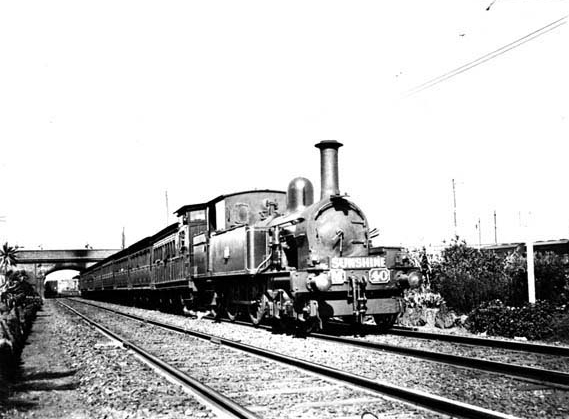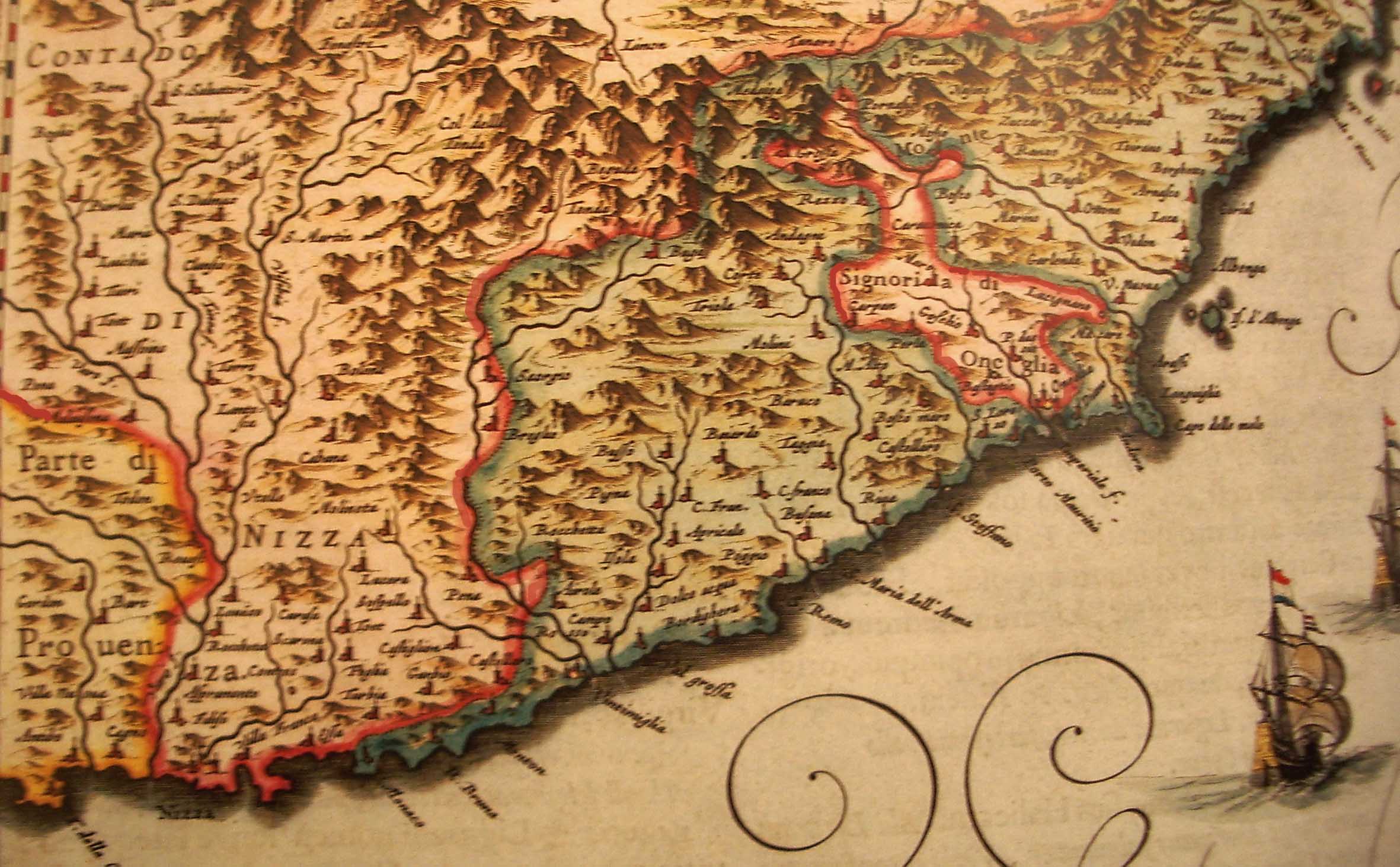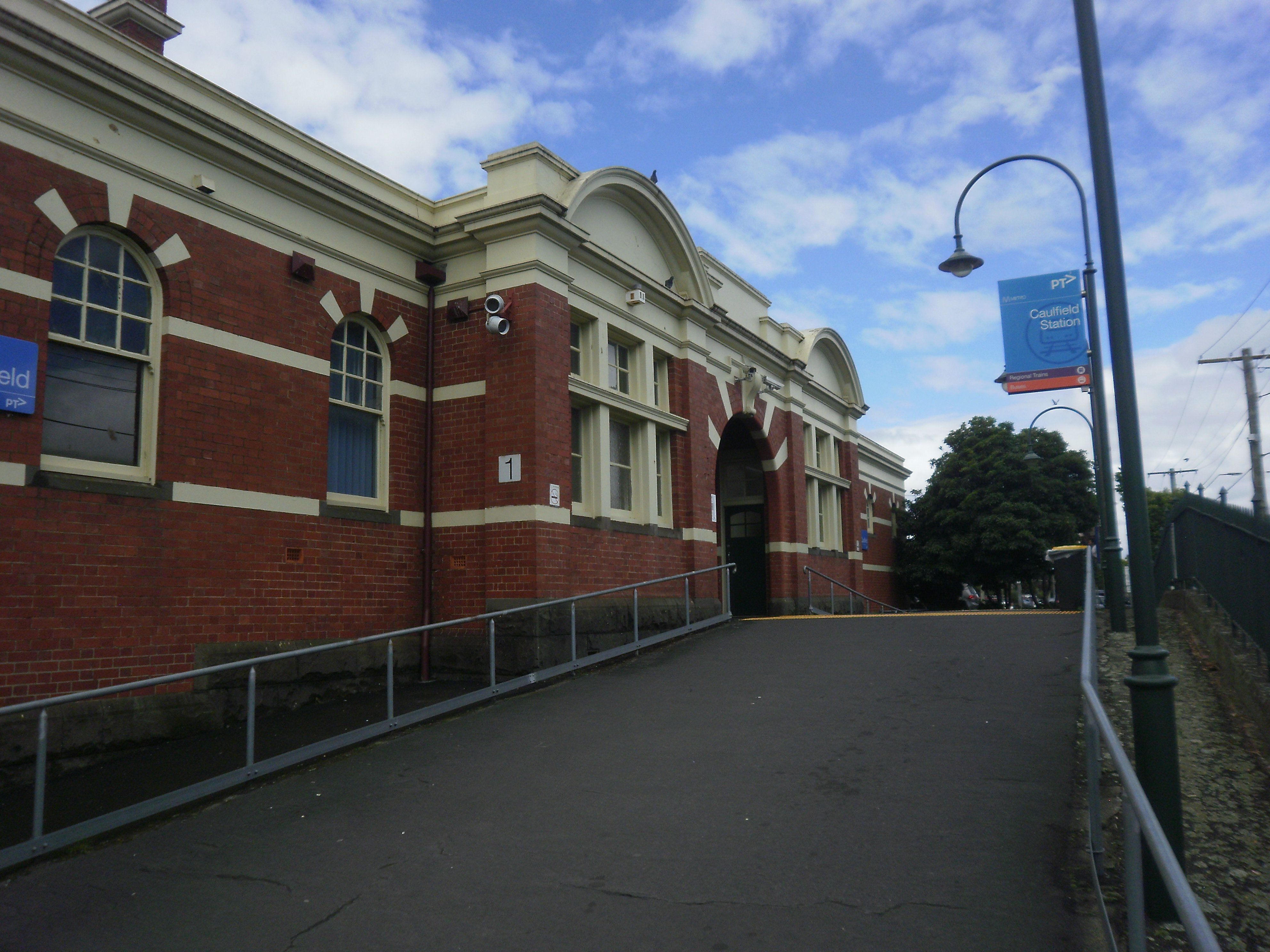|
Mentone Railway Station
Mentone railway station is located on the Frankston line in Victoria, Australia. It serves the south-eastern Melbourne suburb of Mentone, and it opened on 19 December 1881 as Balcombe Road. It was renamed Balcombe on 1 September 1882, and was renamed Mentone on 7 January 1884. It is classed as a Premium Station, and it is listed on the Victorian Heritage Register. History Mentone station opened on 1 September 1882, when the line from Caulfield was extended to Mordialloc. Like the suburb itself, the station is named after the French Riviera resort Menton. A former siding at the station existed until the 1940s, operating across Station Street to a timber yard. In 1959, boom barriers replaced interlocked gates at the former Balcombe Road level crossing, which was located at the Up end of the station. In 1981, the goods yard was closed to traffic. In late 1984/early 1985, a number of sidings and a headshunt were removed at the station. Also in 1985, the signal box and inter ... [...More Info...] [...Related Items...] OR: [Wikipedia] [Google] [Baidu] |
Public Transport Victoria
Public Transport Victoria (PTV) is the brand name for public transport in the Australian state of Victoria, Australia, Victoria. It was the trading name of the Go Public Transport Development Authority (PTDA), a now-defunct statutory authority in Victoria, responsible for providing, coordinating, and promoting public transport. The PTV began operating on 2 April 2012, taking over many of the responsibilities previously exercised by the Director of Public Transport and the Department of Transport (Victoria, 2008–13), Department of Transport. It also took over the marketing of public transport in Victoria from Metlink and Metlink#Viclink, Viclink, as well as responsibility for the myki ticketing system, formerly handled by the Transport Ticketing Authority. PTV's functions were transferred to the Department of Transport (Victoria), Department of Transport on 1 July 2019. However, PTV continues to exist as the brand for public transport services in Victoria. Governance PTV is ... [...More Info...] [...Related Items...] OR: [Wikipedia] [Google] [Baidu] |
Premium Station
The Melbourne rail network is a passenger and freight train system in the city of Melbourne, Victoria, Australia. The metropolitan passenger rail network is centred on the Melbourne CBD and consists of 222 stations across 16 lines, which served a ridership of 99.5 million over the year 2021-2022. It is the core of the larger Victorian railway network, with links to both intrastate and interstate systems. The first steam train in Australia commenced service in Melbourne in 1854, with the metropolitan network having grown over the last two centuries to cover much of the city. Metro Trains Melbourne operates the Melbourne metropolitan railway network under franchise from the Government of Victoria, while the government-owned entity V/Line operates trains from Melbourne across regional Victoria. The metropolitan network is a suburban rail system designed to transport passengers from Melbourne's suburbs into the Melbourne central business district (CBD) and associated city loo ... [...More Info...] [...Related Items...] OR: [Wikipedia] [Google] [Baidu] |
Rail Directions
Railroad directions are used to describe train directions on rail systems. The terms used may be derived from such sources as compass directions, altitude directions, or other directions. However, the railroad directions frequently vary from the actual directions, so that, for example, a "northbound" train may really be headed west over some segments of its trip, or a train going "down" may actually be increasing its elevation. Railroad directions are often specific to system, country, or region. Radial directions Many rail systems use the concept of a center (usually a major city) to define rail directions. Up and down In British practice, railway directions are usually described as "up" and "down", with "up" being towards a major location. This convention is applied not only to the trains and the tracks, but also to items of lineside equipment and to areas near a track. Since British trains run on the left, the "up" side of a line is usually on the left when proceeding in the "u ... [...More Info...] [...Related Items...] OR: [Wikipedia] [Google] [Baidu] |
Level Crossing
A level crossing is an intersection where a railway line crosses a road, Trail, path, or (in rare situations) airport runway, at the same level, as opposed to the railway line crossing over or under using an Overpass#Railway, overpass or tunnel. The term also applies when a light rail line with separate Right-of-way (railroad), right-of-way or reserved track crosses a road in the same fashion. Other names include railway level crossing, railway crossing (chiefly international), grade crossing or railroad crossing (chiefly American), road through railroad, criss-cross, train crossing, and RXR (abbreviated). There are more than 100,000 level crossings in Europe and more than 200,000 in North America. History The history of level crossings depends on the location, but often early level crossings had a Flagman (rail), flagman in a nearby booth who would, on the approach of a train, wave a red flag or lantern to stop all traffic and clear the tracks. Gated crossings bec ... [...More Info...] [...Related Items...] OR: [Wikipedia] [Google] [Baidu] |
Interlocking
In railway signalling, an interlocking is an arrangement of signal apparatus that prevents conflicting movements through an arrangement of tracks such as junction (rail), junctions or crossings. The signalling appliances and Track (rail transport), tracks are sometimes collectively referred to as an ''interlocking plant''. An interlocking is designed so that it is impossible to display a signal to proceed unless the route to be used is proven safe. Interlocking is a safety measure designed to prevent signals and Railroad switch, points/switches from being changed in an improper sequence. For example interlocking would prevent a signal from being changed to indicate a diverging route, unless the corresponding points/switches had been changed first. In North America, the official railroad definition of interlocking is: "''An arrangement of signals and signal appliances so interconnected that their movements must succeed each other in proper sequence''". Configuration and use A ... [...More Info...] [...Related Items...] OR: [Wikipedia] [Google] [Baidu] |
Boom Barrier
A boom barrier, also known as a boom gate, is a bar, or pole pivoted to allow the boom to block vehicular or pedestrian access through a controlled point. Typically the tip of a boom gate rises in a vertical arc to a near vertical position. Boom gates are often counterweighted, so the pole is easily tipped. Boom gates are often paired either end to end, or offset appropriately to block traffic in both directions. Some boom gates also have a second arm which hangs 300 to 400 mm below the upper arm when lowered, to increase approach visibility, and which hangs on links so it lies flat with the main boom as the barrier is raised. Some barriers also feature a pivot roughly half way, where as the barrier is raised, the outermost half remains horizontal, with the barrier resembling an upside-down ''L'' when raised. Automatic boom barrier There are various technologies for an automatic boom barrier. One of them is electro-mechanical, which is widely used due to its reliability. The o ... [...More Info...] [...Related Items...] OR: [Wikipedia] [Google] [Baidu] |
Siding (rail)
A siding, in rail terminology, is a low-speed track section distinct from a running line or through route such as a main line, branch line, or spur. It may connect to through track or to other sidings at either end. Sidings often have lighter rails, meant for lower speed or less heavy traffic, and few, if any, signals. Sidings connected at both ends to a running line are commonly known as loops; those not so connected may be referred to as single-ended or dead-end sidings, or (if short) stubs. Functions Sidings may be used for marshalling (classifying), stabling, storing, loading, and unloading vehicles. Common sidings store stationary rolling stock, especially for loading and unloading. Industrial sidings (also known as spurs) go to factories, mines, quarries, wharves, warehouses, some of them are essentially links to industrial railways. Such sidings can sometimes be found at stations for public use; in American usage these are referred to as team tracks (after the use ... [...More Info...] [...Related Items...] OR: [Wikipedia] [Google] [Baidu] |
Herald Sun
The ''Herald Sun'' is a conservative daily tabloid newspaper based in Melbourne, Australia, published by The Herald and Weekly Times, a subsidiary of News Corp Australia, itself a subsidiary of the Murdoch owned News Corp. The ''Herald Sun'' primarily serves Melbourne and the state of Victoria and shares many articles with other News Corporation daily newspapers, especially those from Australia. It is also available for purchase in Tasmania, the Australian Capital Territory and border regions of South Australia and southern New South Wales such as the Riverina and New South Wales South Coast, and is available digitally through its website and apps. In 2017, the paper had a daily circulation of 350,000 from Monday to Friday. The ''Herald Sun'' newspaper is the product of a merger in 1990 of two newspapers owned by The Herald and Weekly Times Limited: the morning tabloid paper ''The Sun News-Pictorial'' and the afternoon broadsheet paper '' The Herald''. It was first pu ... [...More Info...] [...Related Items...] OR: [Wikipedia] [Google] [Baidu] |
Menton
Menton (; , written ''Menton'' in classical norm or ''Mentan'' in Mistralian norm; it, Mentone ) is a commune in the Alpes-Maritimes department in the Provence-Alpes-Côte d'Azur region on the French Riviera, close to the Italian border. Menton has always been a frontier town. Since the end of the 14th century, it was on the border between County of Nice, held by the Duke of Savoy, and Republic of Genoa. It was an exclave of the Principality of Monaco until the disputed French plebiscite of 1860, when it was added to France. It had been always a fashionable tourist centre with grand mansions and gardens. Its temperate Mediterranean climate is especially favourable to the citrus industry, with which it is strongly identified. Etymology Although the name's spelling and pronunciation in French are identical to those for the word that means "chin", there does not seem to be any link with this French word. According to the French geographer Ernest Nègre, the name ''Menton'' c ... [...More Info...] [...Related Items...] OR: [Wikipedia] [Google] [Baidu] |
French Riviera
The French Riviera (known in French as the ; oc, Còsta d'Azur ; literal translation " Azure Coast") is the Mediterranean coastline of the southeast corner of France. There is no official boundary, but it is usually considered to extend from Toulon, Le Lavandou or Saint-Tropez in the west to Menton at the France–Italy border in the east."Côte d'Azur, côte méditerranéenne française entre Cassis et Menton" ("Côte d'Azur, French Mediterranean coast between Cassis and Toulon") in ''Dictionnaire Hachette encyclopédique'' (2000), p. 448."Côte d'Azur, Partie orientale du littoral français, sur la Méditerranée, de Cassis à Menton" ("Côte d'Azur, Eastern part of the French coast, on the Mediterranean, from Cassis to Menton"), in ''Le Petit Larousse illustré'' (2005), p. 1297. The coast is entirely within the Provence-Alpes-Côte d'Azur region of France. The Principality of Monaco is a semi-enclave within the region, surrounded on three sides by France and fronting the ... [...More Info...] [...Related Items...] OR: [Wikipedia] [Google] [Baidu] |
Mordialloc Railway Station
Mordialloc railway station is located on the Frankston line in Victoria, Australia. It serves the south-eastern Melbourne suburb of Mordialloc, and it opened on 19 December 1881.Mordialloc Vicsig History Mordialloc station opened on 19 December 1881, when the line from Caulfield was extended. It was a temporary terminus until 1 August 1882, when the line was extended to Frankston. Like the suburb itself, Mordialloc gets it name from an |
Caulfield Railway Station
Caulfield railway station is a Commuter rail, commuter railway station on the northern boundary of Caulfield East, Victoria, Caulfield East, a suburb of Melbourne, Victoria, Australia. The station is listed on the Victorian Heritage Register, and was opened on 7 May 1879. The station is named after the nearby suburb of Caulfield, Victoria, Caulfield—located south-west of the station. The station consists of an island platform and two Side platform, side platforms all accessed by a Subway (underpass), pedestrian underpass. There are three principal station buildings located on the platforms, including a small brick building located on Platform 1, near the main platform building. This building was provided in 1974, and originally served as a race ticket office. The station is only partially Accessibility, accessible due to a steep access ramp. Caulfield railway station is served by the Pakenham railway line, Pakenham, Cranbourne railway line, Cranbourne, Frankston railway line, F ... [...More Info...] [...Related Items...] OR: [Wikipedia] [Google] [Baidu] |





.jpg)


